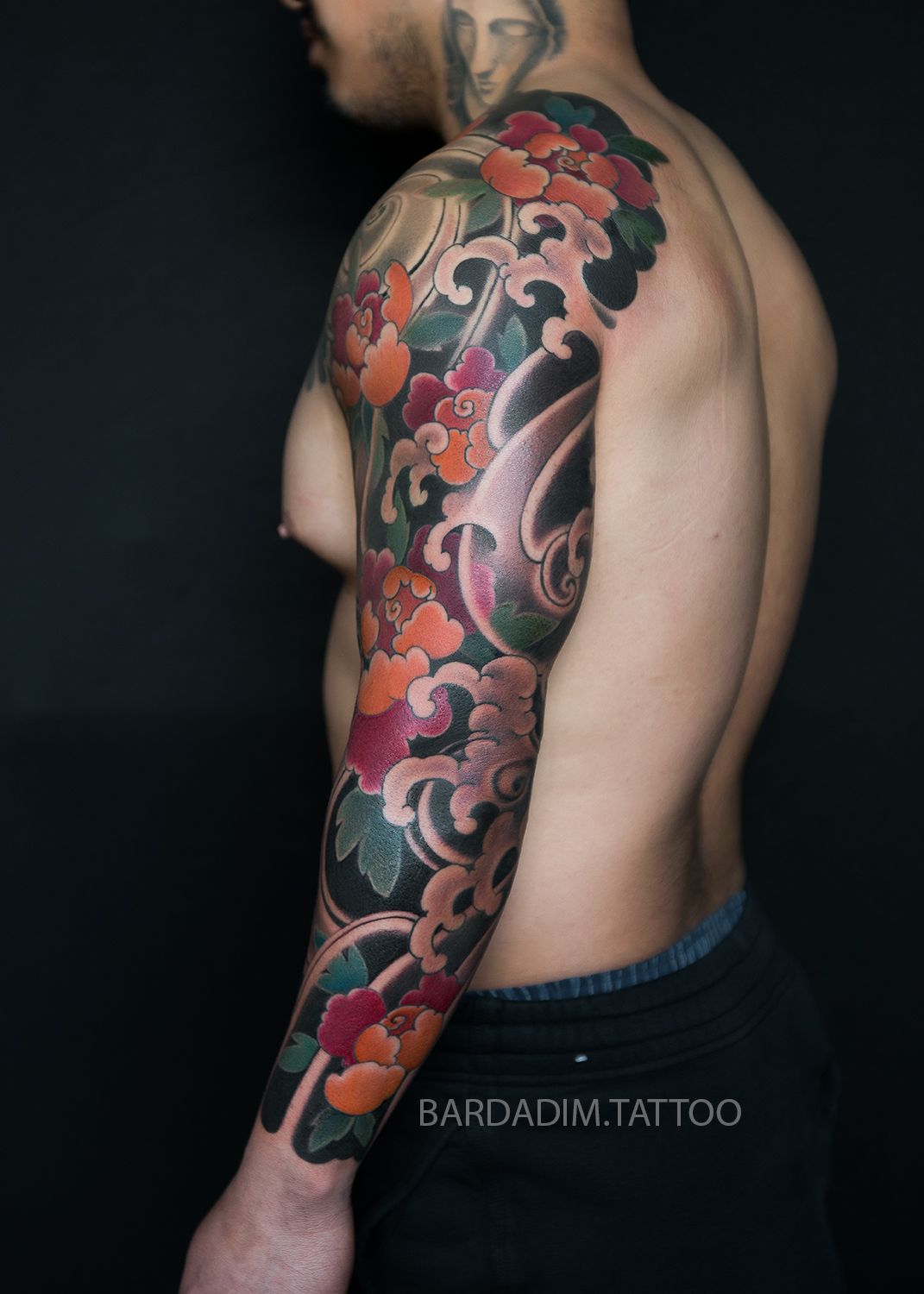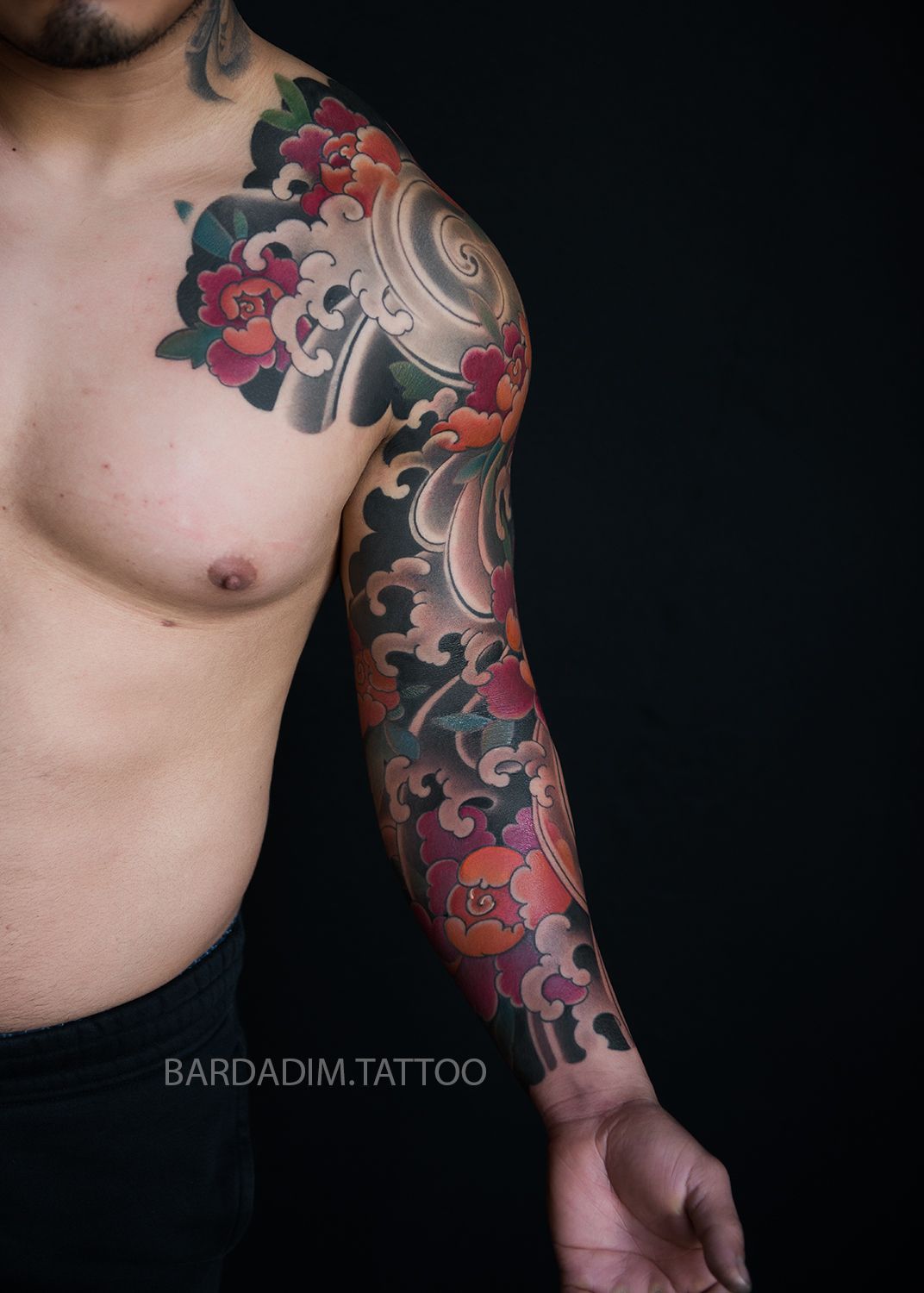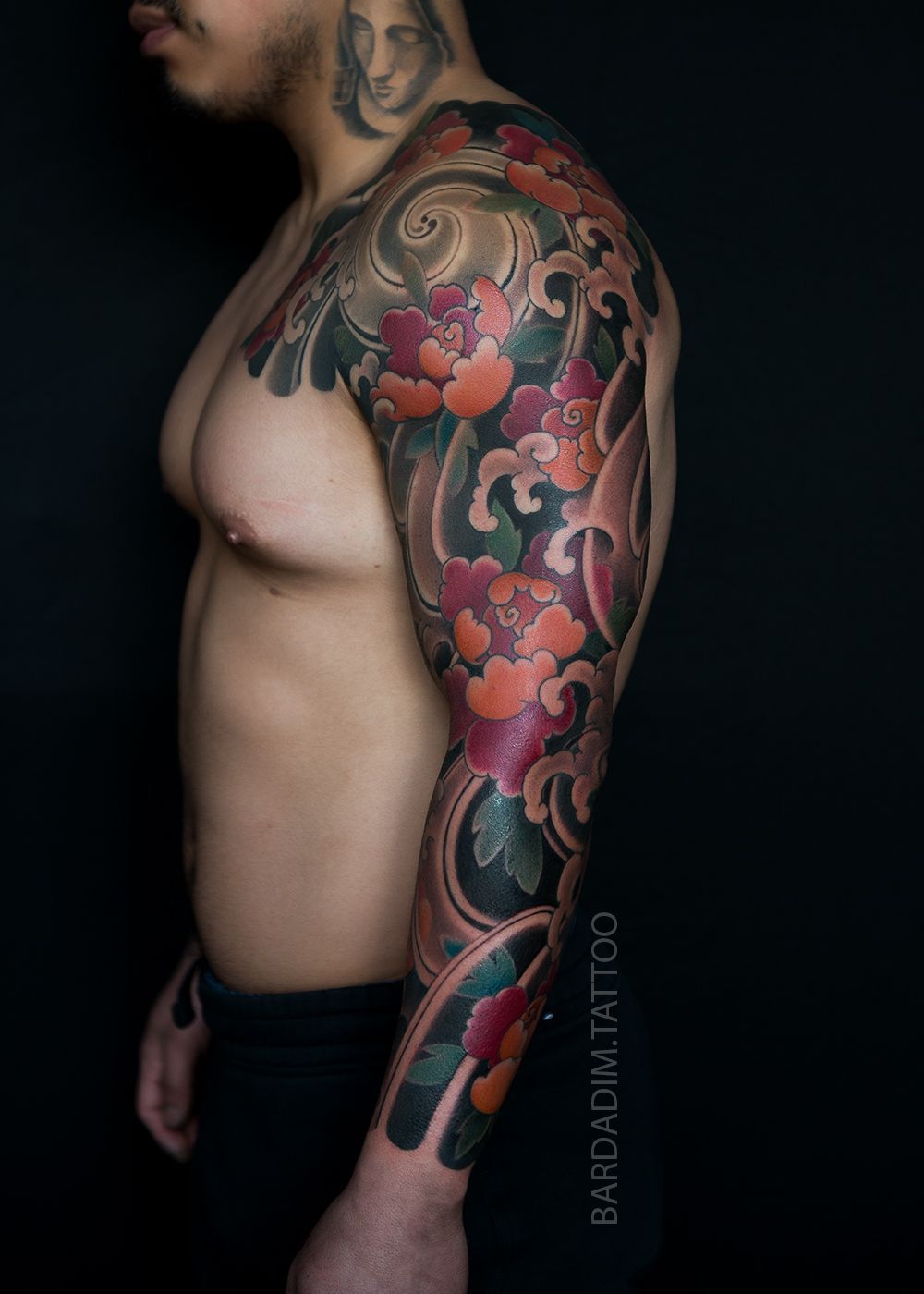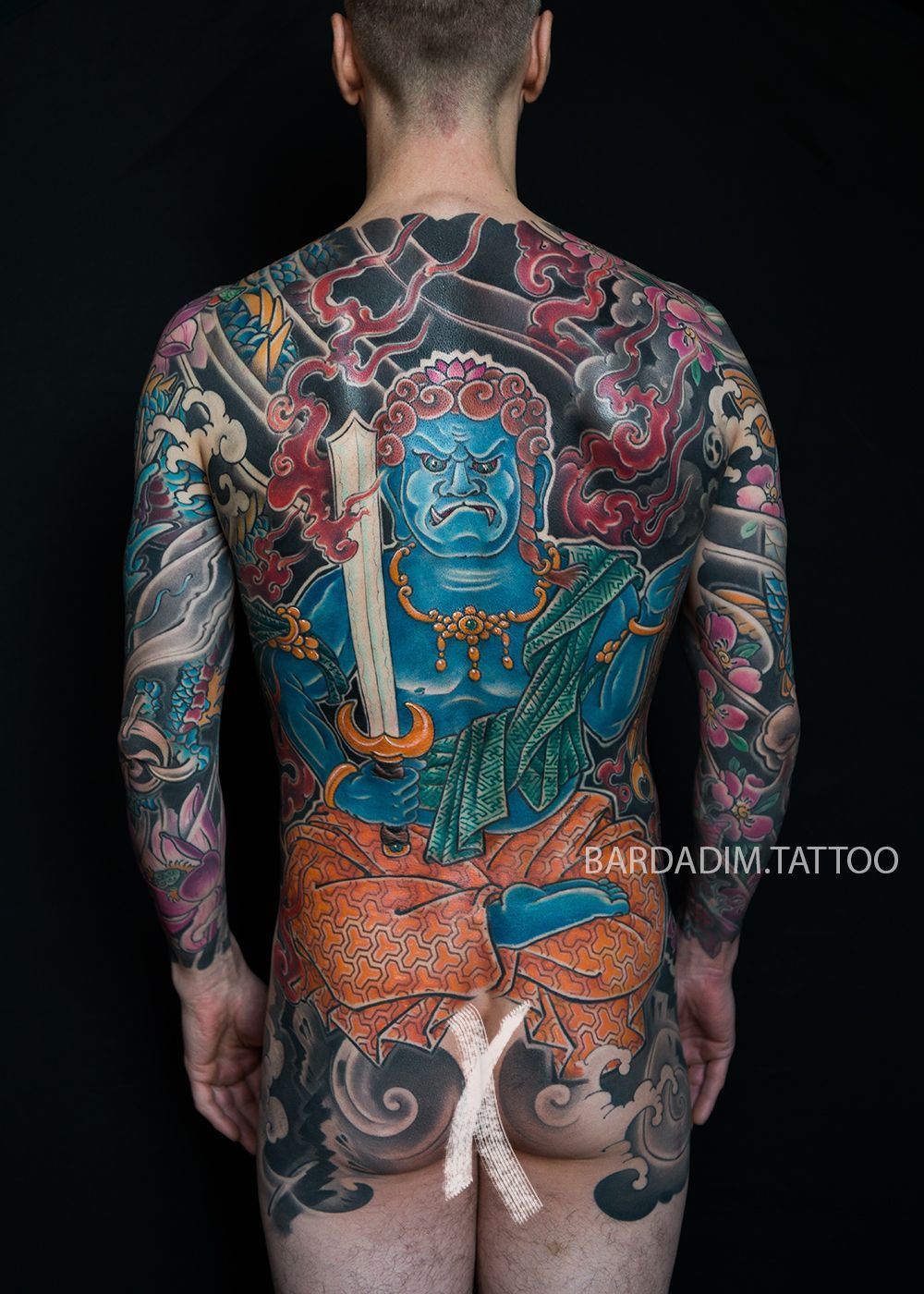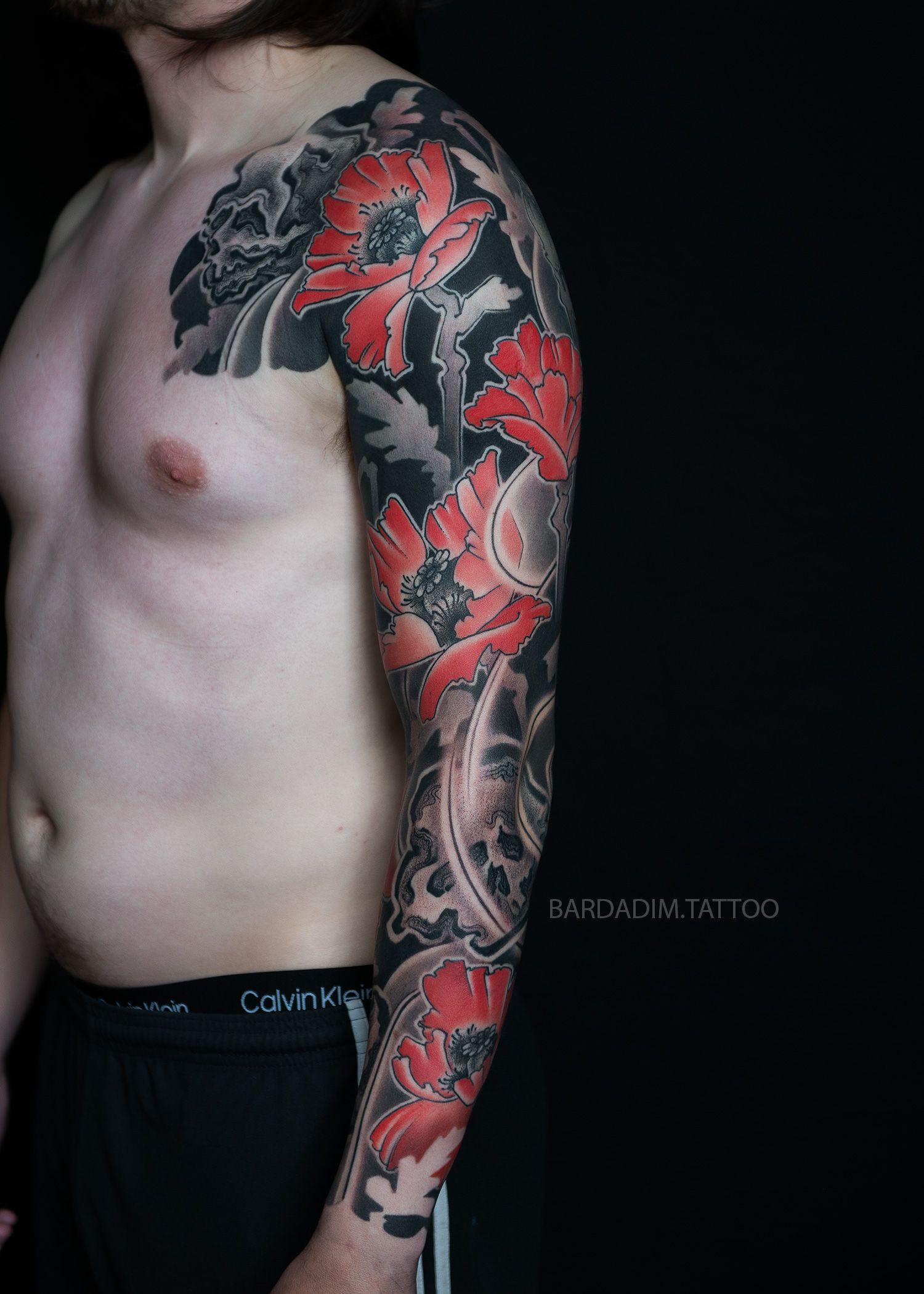Japanese Traditional Mythology
Irezumi, the traditional Japanese art of tattooing, is renowned for its intricate designs and rich symbolism. These tattoos often showcase a harmonious blend of various elements, reflecting the deep cultural heritage of Japan. In this article, we delve into the symbolism behind an Irezumi tattoo sleeve depicting red peony flowers and waves, exploring their significance in Japanese traditional mythology.
In Japanese culture, peony flowers (known as "botan") hold a special place due to their captivating beauty and symbolic associations. The red peony, in particular, holds several meanings that make it a popular choice for tattoos:
The combination of red peony flowers and waves in an Irezumi tattoo sleeve showcases the depth of Japanese traditional mythology and symbolism. The red peonies represent prosperity, femininity, and good health, while the waves embody resilience, change, and spiritual power. Through careful placement and artistic interpretation, these elements harmonize to create a visually stunning and meaningful tattoo, serving as a constant reminder of the profound cultural heritage and philosophical beliefs of Japan.
Tattooing Process
When both red peony flowers and waves are combined in an Irezumi tattoo sleeve, they create a harmonious visual narrative that resonates with multiple layers of symbolism. The juxtaposition of the delicate beauty of peonies with the raw strength of waves symbolizes the intricacies and contrasts of life, encompassing elements of beauty, prosperity, resilience, and spiritual growth.
All important tattoo process steps are shown in this video. Enjoy.
All Tattoo Projects
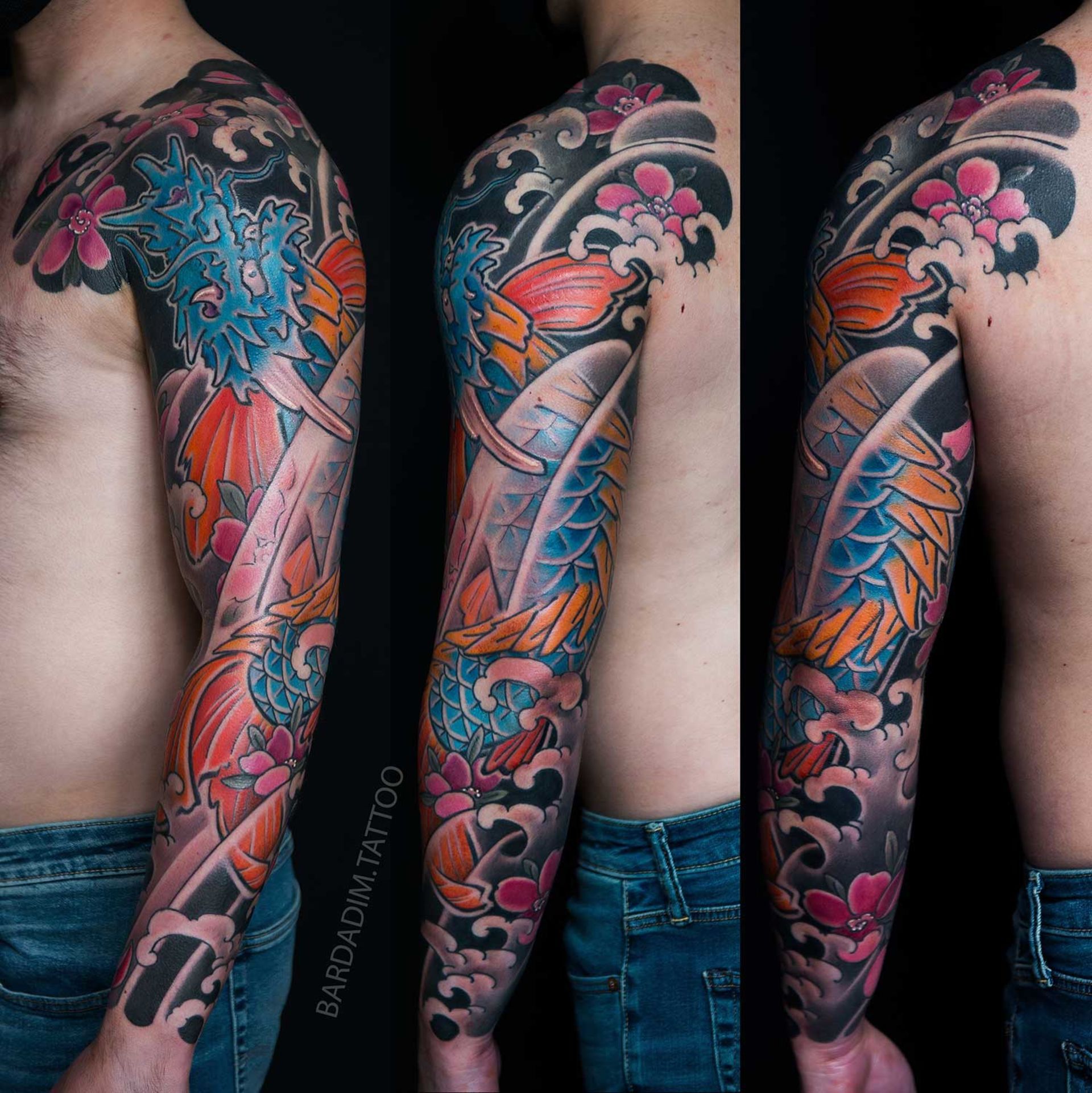
Other Posts
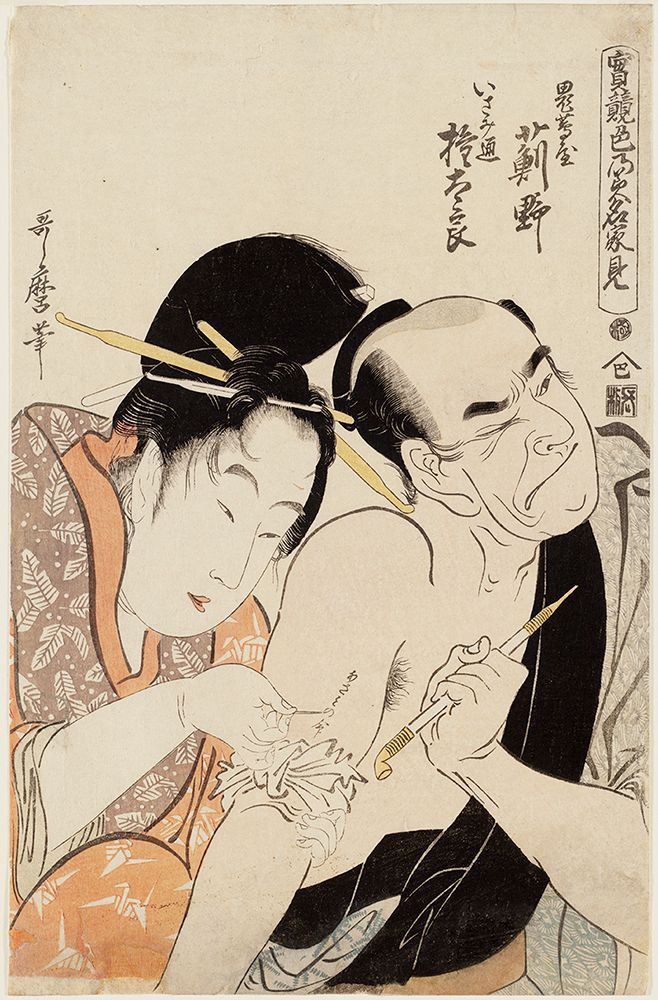

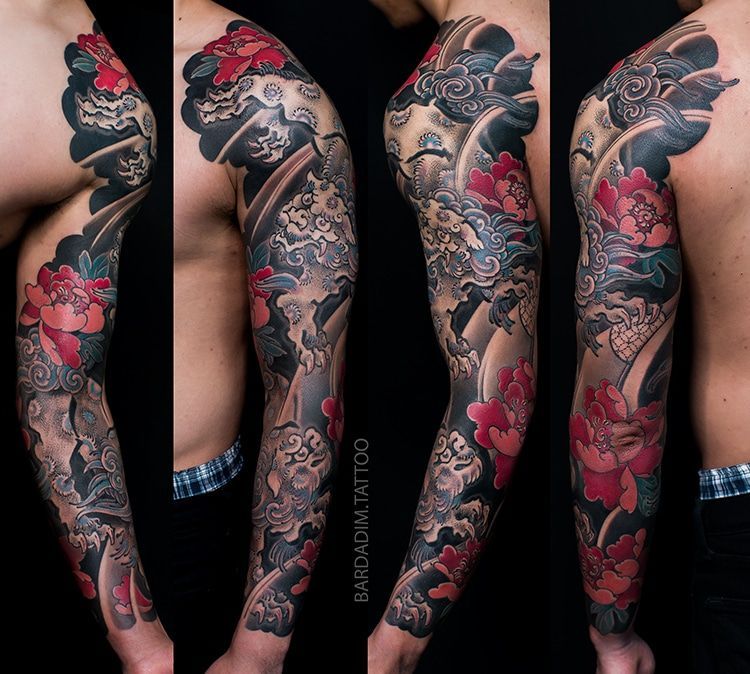
Ready to start your tattoo project?
We do NOT do walk-ins. ONLY private appointments which really easy to schedule. Please learn the process and request your consultation.


